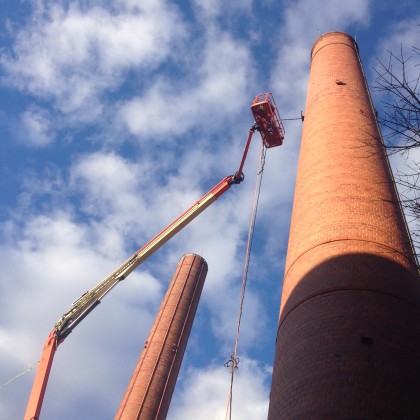22
2018
Can’t Even Make Sense of CEMS?
CEMS is a term that is used quite often when referring to air quality management. If you are new to the industry, or are now being subjected to CEMS regulations, this small but complex area of air emissions can seem overwhelming. Air Tox is available to assist in removing the shroud of mystery surrounding CEMS and help you understand the basics of what a CEMS…
15
2018
Implementing CEMS Alarms: Nuisance or Necessary?
Alarms on a CEM system can be extremely helpful in managing CEMS compliance as they can help avoid emissions violations or catastrophic downtime situations. However, if alarms are not set up intelligently, they can become nuisances that are often ignored resulting in real problems going undetected. The following are some simple, yet informative alarms that we recommend: Non-valid data alarms We recommend setting up alarms…
20
2016
EPA’s Year Ahead 2016
Clean Power Plan • The supreme court stayed the implementation of this rule until the D.C. court rules on the pending litigation • This means states are not obligated to take action to meet the deadlines in the plan • States can voluntarily work towards these deadlines and goals • If the D.C. court rules in the EPA’s favor, only the Supreme Court can lift…
03
2015EPA Seeks Comment on CSAPR Update for 2008 Ozone NAAQS
On 12/3/15, the EPA proposed updates to the Cross State Air Pollution Rule (CSAPR) in order to incorporate the 2008 NAAQS for ozone. The rule is proposing to update the CSAPR NOx ozone-season budgets for 23 states that affect downwind states’ ability to comply with the 2008 ozone standard. The EPA would issue a Federal Implementation Plan, or FIP, for meeting these budgets if the…
24
2015NSPS for Residential Wood Heaters
The New Source Performance Standards for hydronic heaters, wood-burning forced-air furnaces, pellet stoves, and other wood heaters was published on March 16, 2015. This rule sets standards for previously unregulated heaters, and updates standards for new, adjustable-rate woodstoves. However, the ruling gives manufacturers until the end of 2015 to sell any inventory that does not meet these standards. With 2015 quickly coming to a close, it…
17
2015
What you need to know about the EPA’s new Sewage Sludge Incinerator Rule
In April of 2015, the EPA proposed a Federal Implementation Plan for sewage sludge incinerators (SSI units). Affected facilities are required to comply with the plan by March 21, 2016. The plan specifies two subcategories of SSI units: multiple hearth and fluidized bed units. Based on that classification, units have certain emission standards they are required to meet. In addition, there are numerous testing and…
15
20152008 OZONE NAAQS: Regulatory Update
On August 19th, 2015, the EPA proposed to take action on the 36 Marginal non-attainment areas under the 2008 Ozone NAAQS. Below is a summary of the EPA’s three proposals on these areas: 1. 17 of these areas will receive attainment status based on 2012-2014 certified data. 2. 8 areas will receive 1-year attainment date extensions based on their 4th highest daily maximum 8-hour value…
28
2015Simple Tips for Avoiding Downtime
Out of Control Calibrations: A calibration becomes out of control (OOC) when the cal drift value is 4 times the drift specification limit, or when the cal drift value is over 2 times the drift specification limit for 5 days in a row. The latter situation is for Part 60 calibrations only. For a Part 75 calibration, the data becomes invalid from the time of…
22
2015
Startup, Shutdown and Malfunction Emissions – EPA Final Action
Is your facility or state affected by the EPA’s Startup, Shutdown and Malfunction Emissions final action? If your state is affected, this could require a change to your facility operations, to your DAS configuration, and to your reporting requirements. The EPA issued a final action on May 22, 2015 to ensure states have implementation plans in place for emissions to be fully compliant with the…
16
2015EPA’s Clean Power Plan: a Brief Overview
As part of President Obama’s Climate Action Plan, the EPA developed a plan to cut carbon dioxide emissions from power-generating sources. Known as the Clean Power Plan, it provides guidelines for states on how to achieve CO2 emission reduction. The plan is slated to be finalized by mid-summer 2015. Below is a brief summary of the proposed plan. The following are steps that states will…


